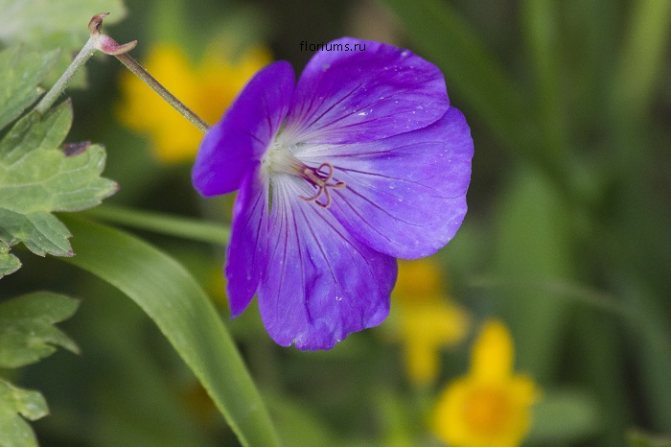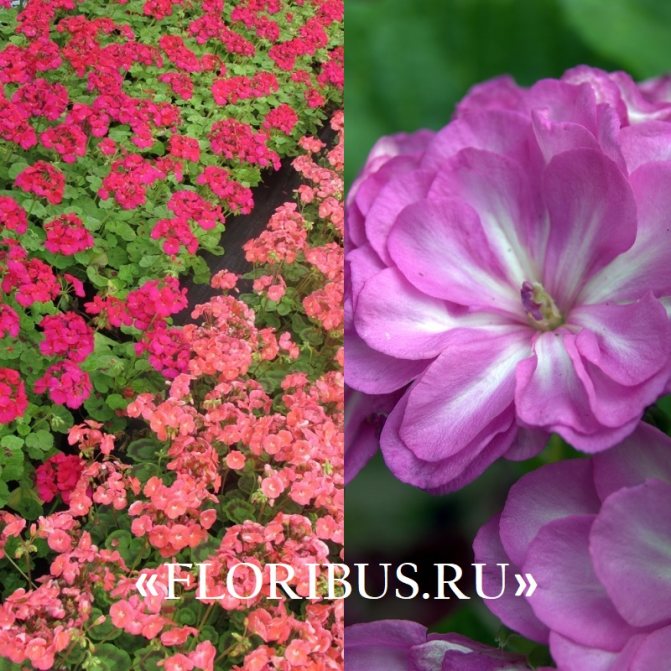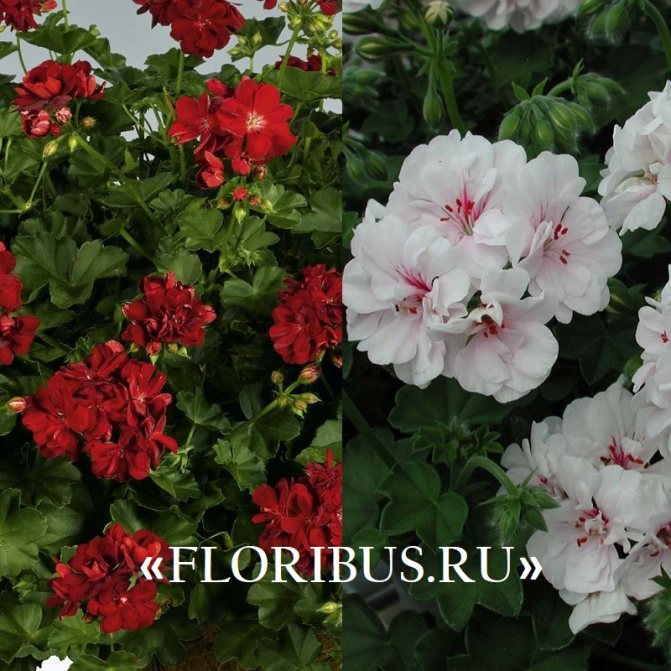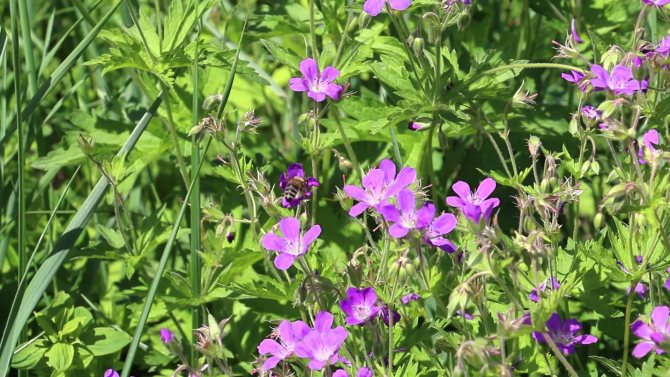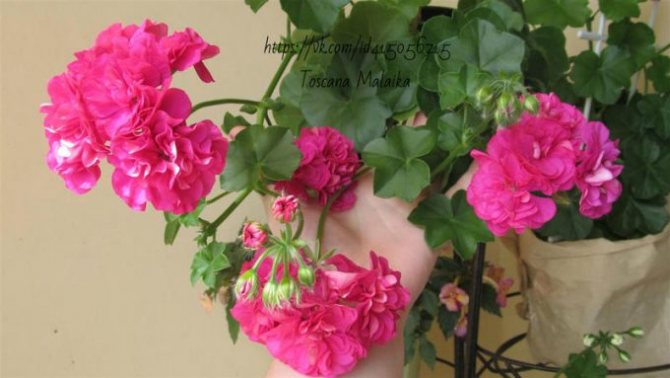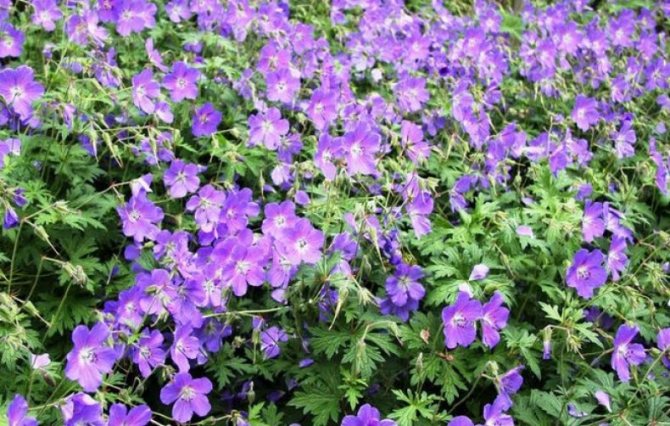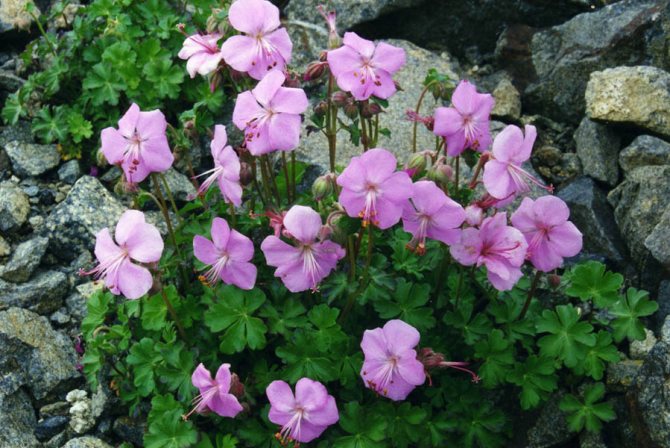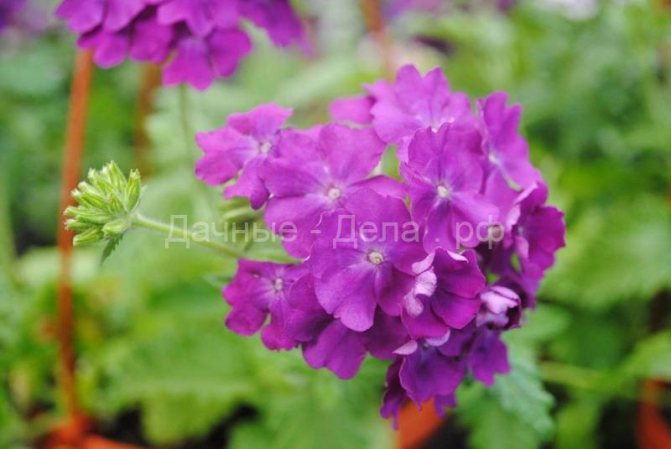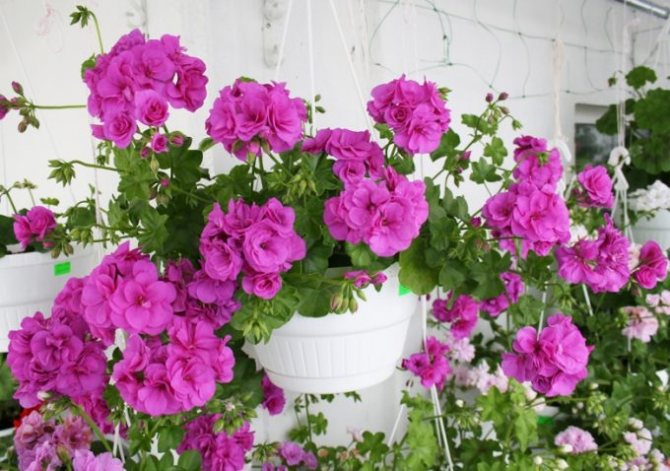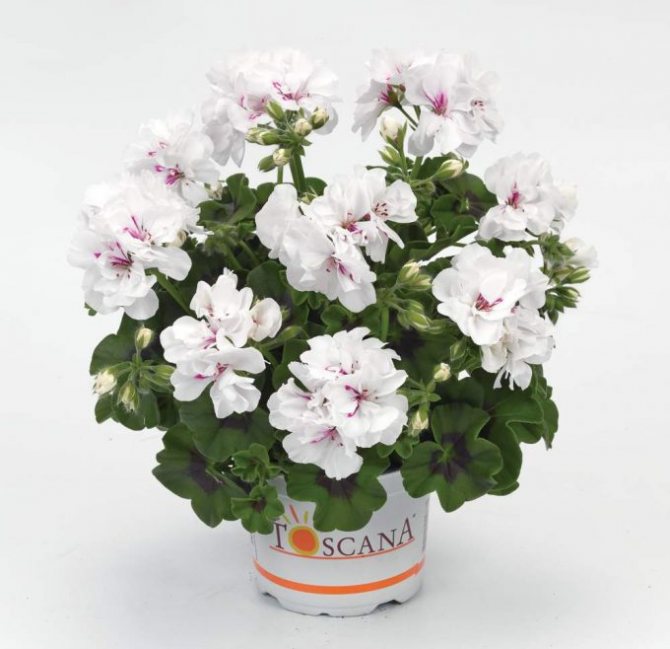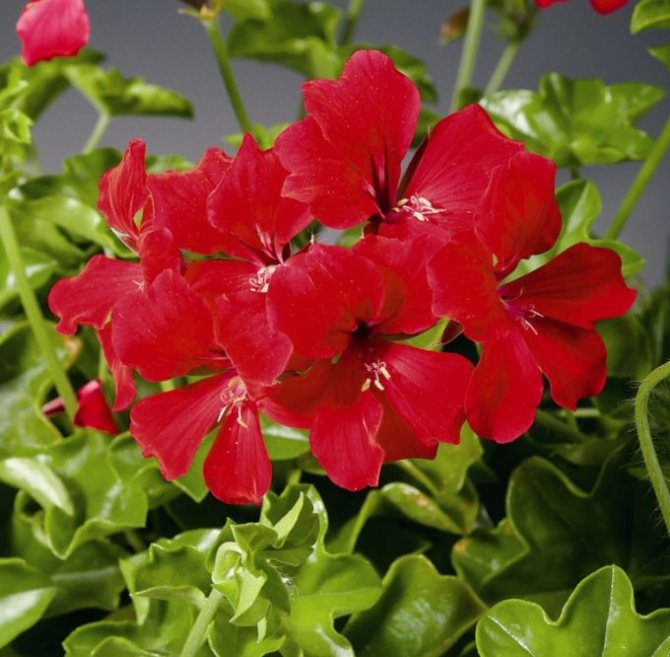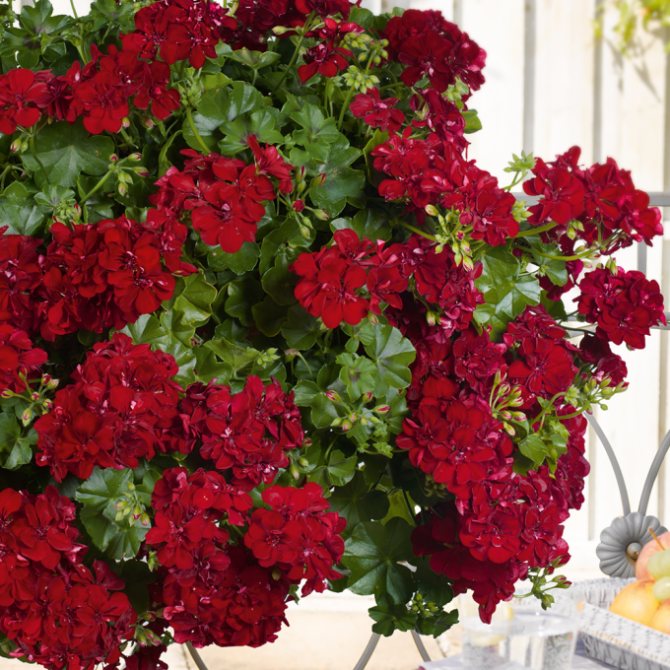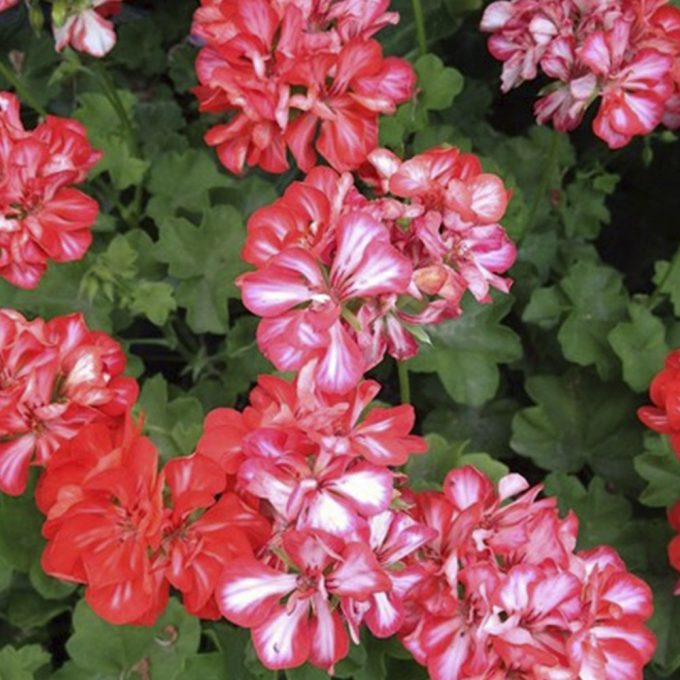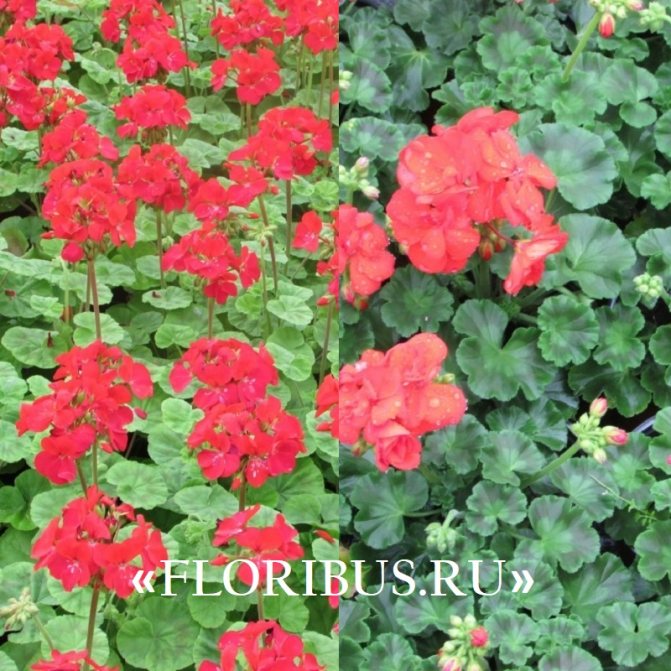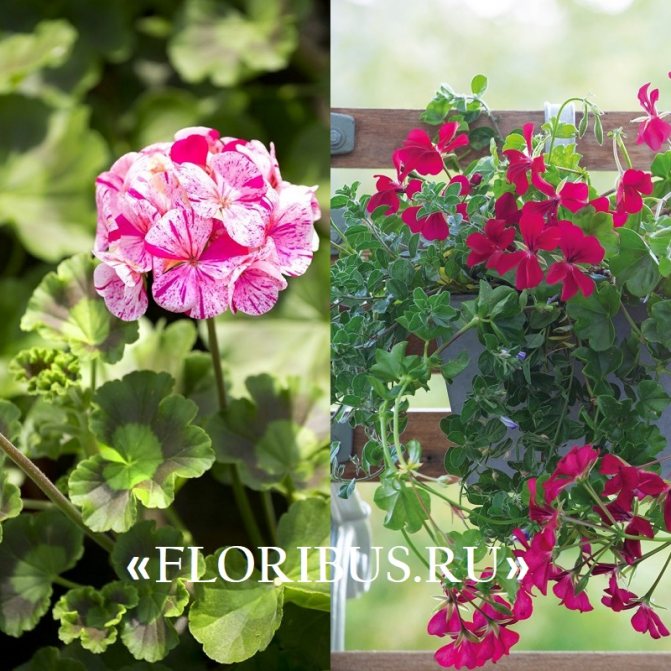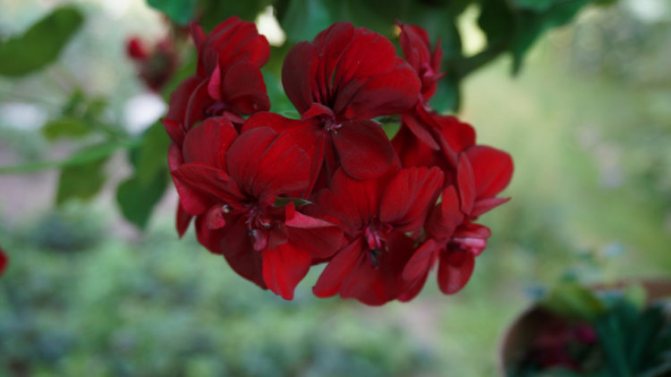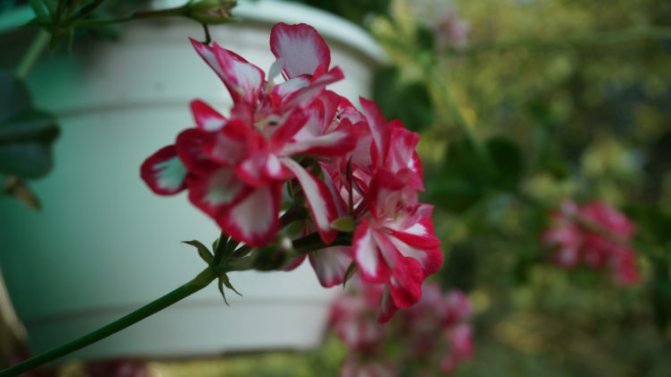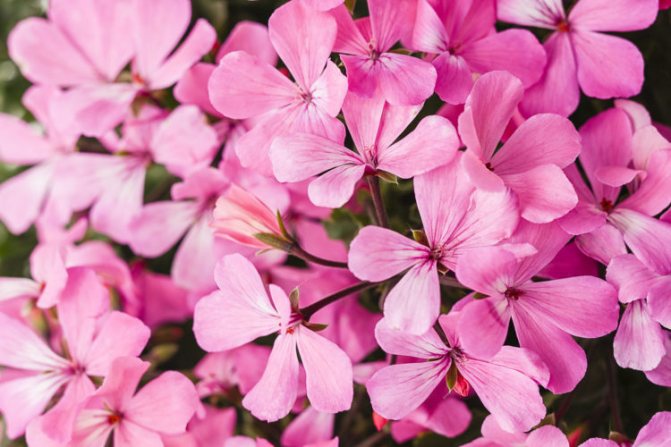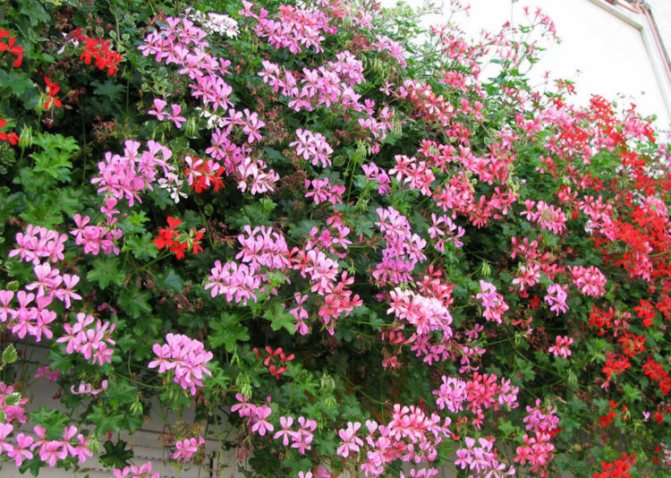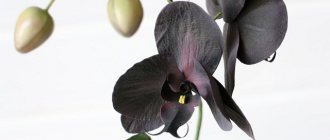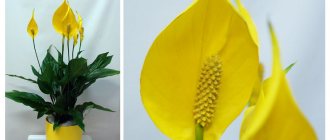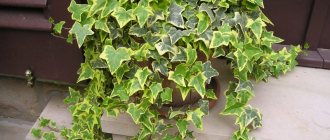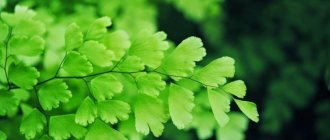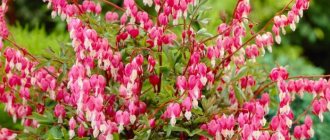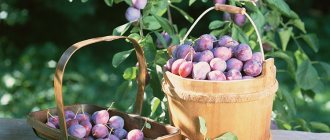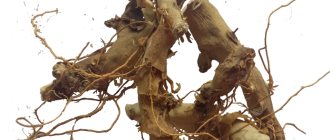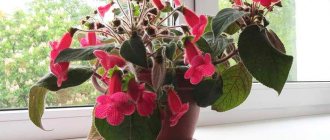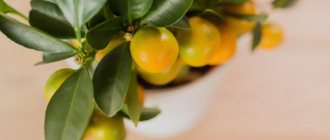Ampel pelargoniums or geraniums are special varietal groups used to effectively decorate the garden and room, balcony and terrace, veranda and gazebo.
The group of ampelous Pelargoniums includes only one variety popular in floriculture - Ivy or Shield Geranium. She and her varieties have a special place in private collections. Many varietal groups of the plant are very whimsical and require careful care. But, despite this, with a very caring owner, they respond with rapid flowering and become an excellent decoration for rooms, balconies, loggias and gardens. You can learn how to care for a plant during cultivation and propagation by cuttings and seeds from the proposed material. A description is also given and the most beautiful varieties are offered.
In home floriculture, perennial ampelous Pelargonium has appeared quite recently. Originally from tropical Africa, the plant grows in warm areas of its homeland, hanging in cascades of stems up to 90 cm long. Unlike other varieties, in particular, from Zonal Pelargonium, the plant differs in that the leaf plates are hard to the touch and are not covered with small felt hairs.
The leaf plates of the plant are dissected into 5 lobes of a dark green color. Rare varieties have decorative and deciduous properties. Their leaf surface may have white or yellowish spots. The leaves are wide - from 3 to 6 cm. Attached to the shoots with long herbaceous petioles.
Look at the beautiful ampelous pelargoniums in the photo showing the richness of the shades of this plant:
The beauty of gardens and window sills - geranium
It so happened that scientists for a long time could not decide whether to equate geranium and pelargonium, but in the minds of the average man, these plants are identical. Today, landscape designers prefer to use an unpretentious plant to decorate not only indoor spaces, but also garden and park areas. More than 40 types of garden geranium are widespread on the territory of our country. Deserved popularity is enjoyed both by adequately withstanding features of a cold climate, and varieties of geraniums of thermophilic varieties. Plants differ in growing conditions, flowering time, height:
- tall (from 50 cm) - this is Georgian, meadow, red-brown, forest, flat-leaved, magnificent, small-grained;
- undersized (below half a meter) - Dalmatian, Himalayan, ash, large rhizome.
Gardeners prefer hardy plants when decorating flower beds and surrounding areas. Skillfully using geranium varieties that have proven themselves well in temperate climates, you can decorate the area without much hassle. Plants are able to please owners with long flowering and lush greenery. Taking into account the peculiarities of the site, its size and shading, you can easily choose options that will justify the hopes placed on them.
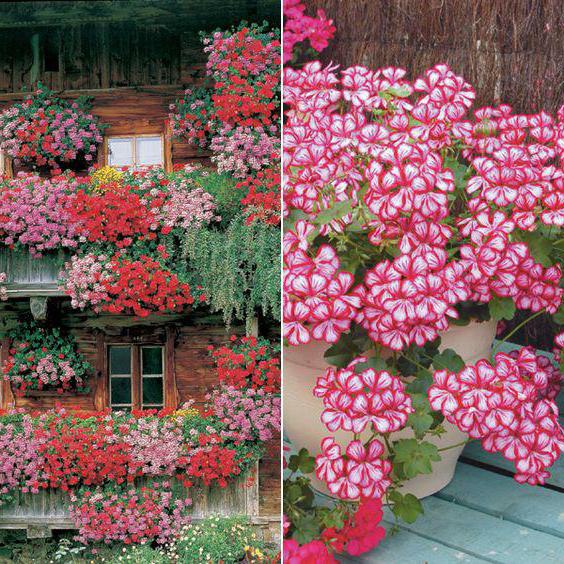
Owners should take a closer look at the varieties of geraniums available on the territory of the site, which will eventually demonstrate the best qualities and "prescribe" in comfortable conditions for them.
Popular varieties
Varieties to look out for:
- AMETHYST... A great option for a veranda or balcony. After planting, the plant develops rapidly, resulting in a decorative "living" basket. Inflorescences of large double flowers are characterized by dark pink, purple, bright crimson shades.


- CROCODILE... A characteristic feature is the original color of the leaves: veins of bright yellow color are clearly visible on a green background. Inflorescences are formed from coral or purple flowers.
- JAGKY GAULD... The semi-shrub develops rather quickly, is characterized by pomp and branching. Initially, double flowers have a snow-white color, but under the influence of ultraviolet radiation they can be repainted in purple or pink.
- ICEROSE... An adult shrub is completely covered with white double flowers. Outwardly, the plant is somewhat reminiscent of a rose bush.
- ROULETTA... The low shrub is characterized by its abundance. The highlight of the variety is the original color of the flowers: the white petals at the edges are painted in a bright pink color.
- Mrs. MARTIN... The variety develops very quickly, an adult plant forms a decorative "living" basket. Inflorescences consist of double flowers of a light lilac or pink hue.
- RHAPSODY... The variety is a lush bush with glossy leaves and burgundy buds.


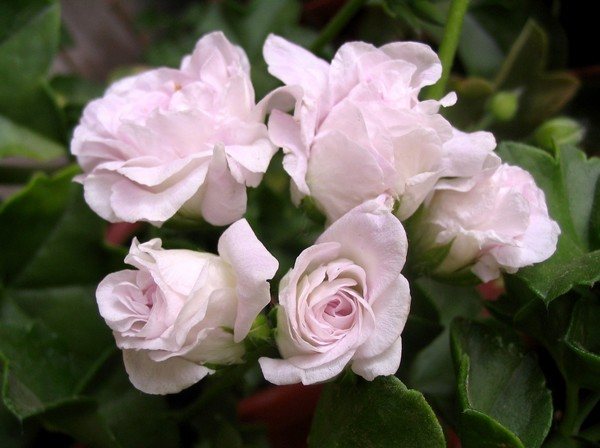

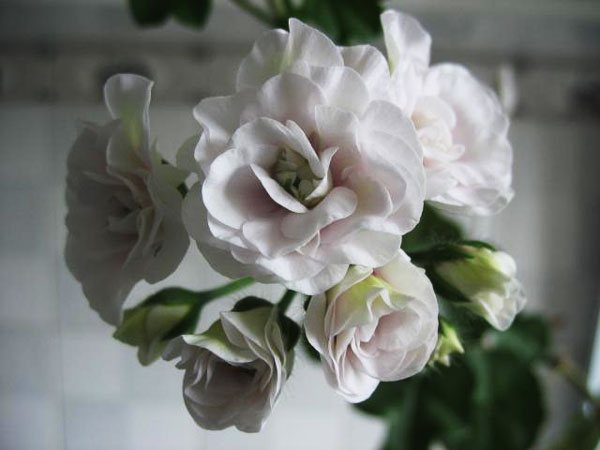

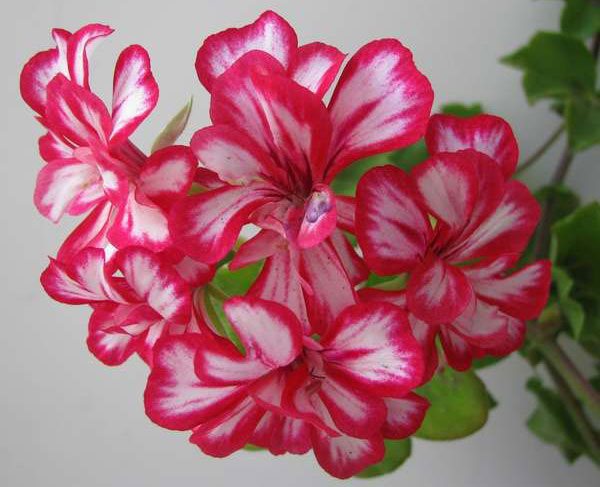





TIP! Almost all varieties of ampelous pelargonium develop very quickly. It only takes a few weeks to grow a lush bush, while the rhizome fully performs its functions even in tight containers. Ivy-leaved pelargonium sheds leaves and flowers if the root system still lacks space.
Winning varieties of geraniums for the landscape
The well-known Geranium pratense, otherwise meadow geranium, is a frequent visitor to the flower beds today. This species was not in demand before, but now everything has changed. Lovers of unpretentious plants know what kinds of geraniums it has. Today we will introduce you to the photos and names of the most popular varieties, and you can choose an interesting combination of green pets to your liking. Competently selected options allow you to transform the territory, attract the eyes and delight even sophisticated landscape designers. For the background, as a rule, a strong and vigorous variety Summer Skies is used, notable for its pinkish double flowers with lavender shades. Tall with original carved Splish-Splash leaves is also in demand, but after flowering it is recommended to prune the bush so as not to detract from the beauty of new shoots. The charm of Plenum Violaceum, with its dark blue baskets shimmering with a purple hue. And although the terry flowers are small, this does not spoil the overall impression. But such a variety as Double Jewel does not cause special delight among flower growers because of the nondescript flowers and the huge size of the crumbling bush in the second year.
From shade-loving options, Mrs Kendall Clark is ideal (for a completed look of the site). This plentifully flowering plant of short stature (no more than 40 cm) fascinates with bright blue petals pierced with delicate white veins. And fans of white colors are attracted by its long flowering semi-double variety - the graceful Laura.


Red-leaved meadow geranium will become a worthy decoration of terraces and flower beds. These options will look good in the foreground. The purple hue of Midnight Reiter and Purple Heron leaves will add zest to the flower garden. Carved dark greenery and compact root system Hocus Pocus, Black Beauty, Okey Dokey will surely come to court. And purple streaks on the leaves of Midnight Clouds and delicate pinkish flowers will be a winning touch in the formation of the territory.
Geranium macrorrhizum is an admirable large-rhizome geranium, because it perfectly takes root in the shade and under the scorching sun, growing and adapting in any corner of the garden.
Planting geraniums
Geraniums are available in three varieties: seeds, rooted cuttings, and a well-developed mature bush. Their cultivation must be considered separately.
Growing pelargonium from seeds
Pelargonium seeds are quite large, so, as a rule, problems with planting them, as a rule, do not arise even for novice florists. When planting seeds, they are laid with the flat side on the ground, slightly pressing down. The distance between the seeds is maintained at least 2 cm.
After they have been planted in the ground, the soil is not watered with a watering can, but well sprayed from a spray bottle, so the seeds will not be washed out and remain in place.
Usually, in order for geraniums to color in summer, planting of its seeds begins at the end of February. A plastic bag is put on the container in which the seeds are planted. Everything must be removed to a dark, warm place and checked daily for seedlings. Basically, pelargoniums emerge in 5-6 days.
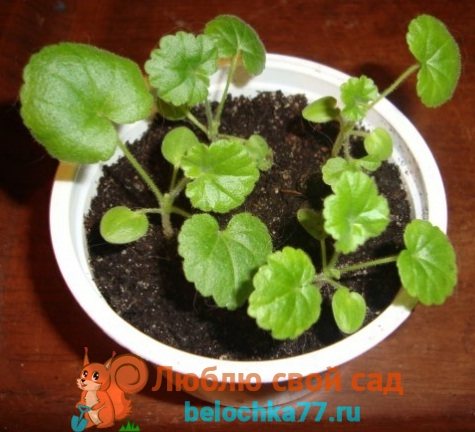

After at least one sprout appears, the entire container is exposed to the light, and the bag is removed. When the seedlings grow up and have four leaves, they can be planted in separate pots (this operation is called picking).
Growing a rooted cuttings and a well-developed bush
Here everything will be based on the selection of a pot and soil for transplanting the acquired seedling. Ready-made soil can be bought in a specialized store, or you can make it yourself if there is land at home brought from the garden in the fall. To do this, you just need to mix:
- upper light peat,
- land,
- sand,
- vermiculite.
The soil compiled in this way will be loose. The selection of the pot is made depending on the condition of the root system of the seedling.
Even for an adult bush, a small pot with a diameter of about 15 cm is suitable. Of course, it is recommended to purchase a pot made of baked clay, but they are usually more expensive than plastic ones.
Therefore, if you don’t want extra costs, then the plastic one is not so bad either, it’s just that the water doesn’t dry out so quickly, and there is a risk of “flooding” the plant.
It is imperative that to prevent root rot and black leg, it is necessary to provide high-quality drainage in the pot, poured in a layer of 2-3 cm.What can I say, the pot itself must have at least one drain hole at the bottom.
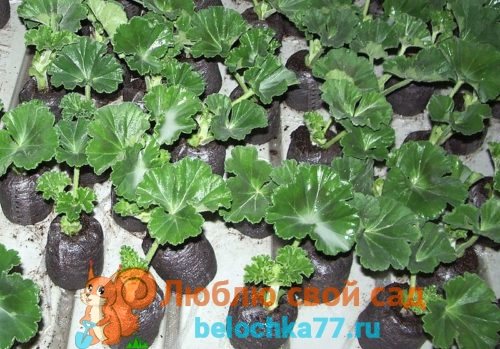

geranium cuttings in peat tablets
Legends and surprising facts about geraniums
The plant owes its usual appearance to every grower to a breeder from England, George Tradescan, who was captivated by the process of its cultivation. And with the birth of each new variety, he gave it an original name that was associated with an angel or a butterfly. The varieties of geraniums created by him amazed not only with their beauty, but also with healing properties. So, the Royal variety got its name due to the fact that the plant saved the monarch from insomnia. There are legends associated with geraniums that have come down to our times.
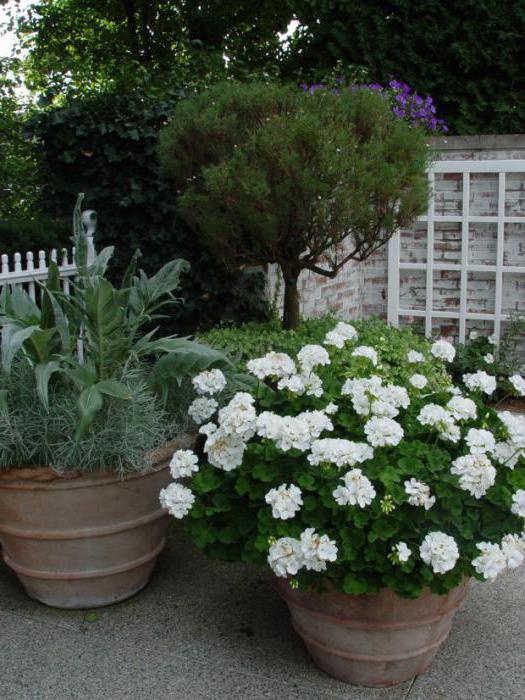

- An oriental legend says that in ancient times on a weed that attracted people in no way, the prophet Mohammed, descending from the mountains, hung up wet clothes. The plant straightened the fabric, so that the cape quickly dried out in the sun. For this, the prophet decorated the bush with marvelous flowers exuding the most delicate aroma.
- The legend of a crane that fought off a flock and fell from powerlessness in a field under a freezing rain is pitying. Quietly freezing alone, the bird was covered with falling snow. Saying goodbye to life, the crane dropped a tear. In that place, in the spring, a marvelous plant grew with flowers reminiscent of heavenly azure, which the bird yearned for.
- In Germany, they talked about a shoemaker who loved to drink and once after another party on the road found a wonderful plant. When he presented the flower to his wife, she, inhaling its aroma, changed her mind to make a scandal because of her husband's addiction to beer.She planted a flower in the water, and when the roots appeared, she transplanted it into a pot, after which peace, tranquility and love settled in the house, and the husband stopped abusing alcohol.
- According to Slavic belief, geranium petals attract the attention of a beloved. They were sewn into a canvas bag and carried with them.
- In the East, it is customary to put flowerpots with white geraniums at the entrance to the house to scare away snakes.
Wintering conditions for street ampel pelargonium
In order for street pelargonium not to turn into an annual, you need to know about the conditions of its storage during wintering. The tropical beauty does not tolerate a drop in temperature below 10 degrees. In regions with cold winters and even in the European part, perennials quickly freeze and die even from short-term exposure to subzero temperatures. Also, you should not transfer to the winter and grow those geraniums that are street geraniums in ordinary home conditions. In this case, the plant will experience severe stress and may get sick.
For the wintering of ivy ampelous pelargonium, choose a cool room with good lighting. Even at this time of year, geraniums love bright light. The air temperature in the room should be in the range of 10-12 degrees Celsius. If you keep a perennial in a pot, then occasionally water the soil so that it does not completely dry out and cause the death of the roots.
Some growers cut off the entire ground part of the perennial for the winter. Then, take it out of the pot and place it in a transparent plastic bag with damp moss. In it, the plant is kept throughout the winter months. The rhizome in sphagnum is periodically inspected, ventilated and moistened so that it does not die from drought.
With this method of wintering a plant, a threat may arise that is directly related to various rodents. Mice can get to plants and eat not only the shoots, but also spoil the rhizomes. Protect perennials from rodents. If it is not possible to create the necessary wintering conditions for geraniums, then cut cuttings from the mother plants and propagate the perennial in this way, preserving all the characteristics of the mother bush.
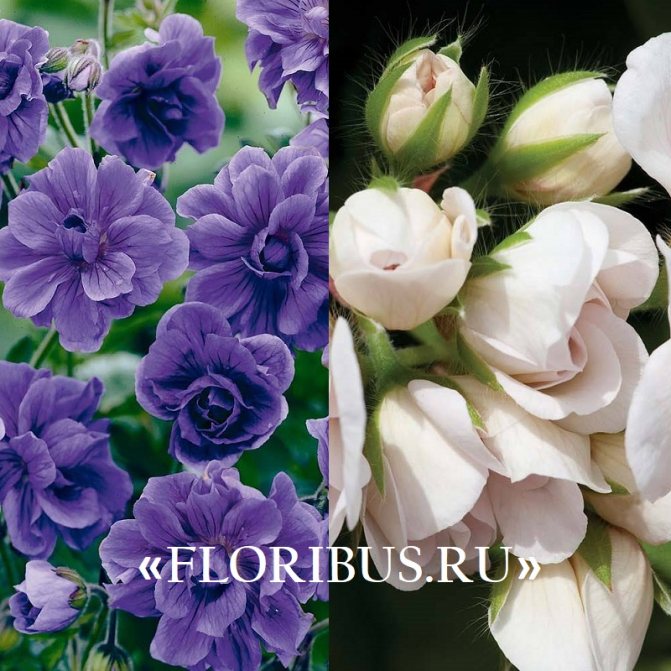

Get to know better - gorgeous geranium! Varieties and varieties
A beautiful flower can be found not only in garden plots. Geranium has been a worthy decoration of window sills for many centuries, the varieties of which are baffling to flower growers, because their eyes run up from their diversity. Breeders have developed new varieties that differ in shape, color of inflorescences and leaves. Indoor geraniums are classified into several groups:
- zonal;
- ampelous (ivy);
- fragrant;
- royal;
- succulent.
- In order not to be mistaken in the choice, you should carefully study the varieties of room geranium. Photos and names will help future owners decide.
The most common is considered to be zonal geranium. This plant with a straight trunk and wavy leaves blooms profusely all year round, bringing joy to households. Buds are simple, collected in five, semi-double - up to eight and double - over eight petals.


What kinds and varieties do zonal geraniums have? The photos (the indoor beauty is presented on them in all its splendor), used in the article, demonstrate different options. The most popular among the people:
- The non-double variety Bravo Pastel is distinguished by abundant flowering. This species has a flower with white petals and a pink center.
- The deep red Rumba Fire belongs to non-double-colored and pleases the owner with spreading ruby flower caps.
- Angelic pink geraniums resemble pansies in appearance.
- Rosebud red surprises with the similarity of its flowers to rosebuds.
- Royal salmon has large inflorescences, the middle of which is dark.
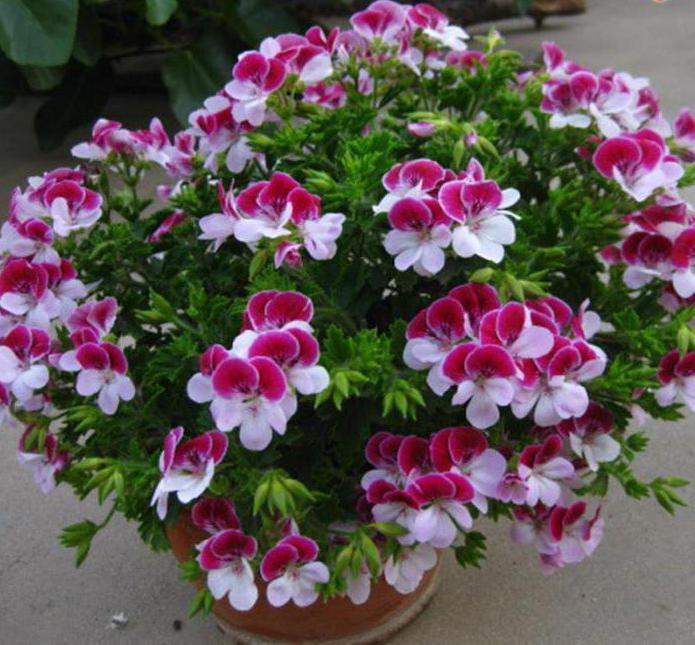

Botanical description and history of origin
The plant belongs to the genus subshrub and herbaceous. It is part of the geranium family.
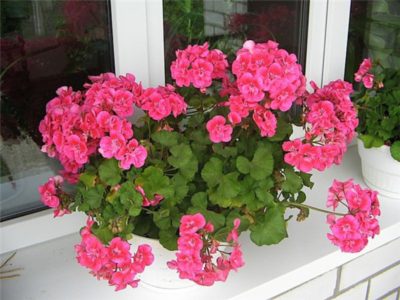

Currently, about 400 species of geraniums are known.that grow all over the world, including tropical countries. If we translate the word "geranium" from the Greek language, then it will mean "crane". This is due to the shape of the fruit of the plant, which is vaguely similar to the beak of a crane.
The flower was brought to Europe from the African continent back in the 17th century. The bright and lush plant was especially fond of European aristocrats. Subsequently, geraniums spread among other classes. This plant was brought to Russia only in the 18th century.
How do you like this kind of geranium? Tulip
Among the huge assortment of flowers, there is a look that is reminiscent of Holland. A novice gardener asks the question: "What other types and varieties of geranium have?" The photo (the indoor beauty depicted on them amazes with the exuberant flowering) of these flowers attract the admiring gaze of lovers of ornamental plants. One of the chic options related to the zonal varieties is the original geranium, which has buds that look like tulips. Petals in the amount of 6-9 pcs. are not fully disclosed. Breeders from America presented the world in 1966 with this variety, which was obtained by mutation of Fiat geranium. Of particular value are species that have a large number of unopened buds and bloom in bunches of bunches.


They grow as a bush, therefore they require the attention of the owner, who must correctly form the crown. After rooting, the stalk is pruned to achieve beauty and the desired result. The elegance of this variety attracts people who are passionate about what they love, who, if desired, grow real masterpieces. The tulip-shaped geranium is especially popular with connoisseurs of beauty, the varieties of which amaze the imagination with the shape of the flowers. These are Happy Bezdey and Patricia Andre, Red Pandora and Koni, Victoria Andre and Maria-Louise.
Reproduction of room geranium
To preserve the characteristic features of the variety, geraniums are usually propagated by cuttings or by dividing an adult bush.
Seeds
If you collect seeds with your own hands, then there is no guarantee of preserving the variety. If you want to try planting harvested seeds, then you need to carry out scarification, i.e. removal of the outer shell. The seeds are ground between two pieces of sandpaper.
Cuttings
Still, flower growers most often cut a bush. Cut cuttings about 6 cm long are placed in water until young white roots germinate and then planted in the ground or germinated in coarse wet sand. Both methods are effective and widely used.
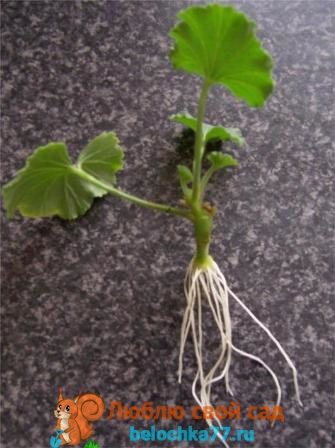

Bloom
Geranium blooms after planting with seeds in about five months, so if they are planted precisely at the end of February, then pelargonium will bloom in the same year.
The stalk will bloom earlier - in three months. However, these dates refer mainly to zonal species, Angels and Royal Pelargoniums will bloom in any case only in the second year.
Scented species
The popularity of geraniums is great, which is explained not only by the splendor of the flowers, but also by the delicate aroma that the plant exudes. Scented geranium creates a favorable indoor climate, helping to purify the air. The aroma of the leaves is in demand in the perfumery and food industries, and is actively used in the preparation of mixtures for tea compositions.


A fragrant variety of room geranium, the photo of which is familiar to fans of this plant, is grown on windowsills not for flowers, but for the beautiful carved foliage, which is used by florists for the background. Also in medicine, the positive effect of the aroma of the plant is noted, which:
- has an antibacterial effect;
- helps with migraines;
- helps to protect the body against viral diseases;
- effective for edema in obese people;
- salutary for hypertensive crises.
Experienced housewives strive to install a pot with such geraniums in every room, because the smell repels insects (flies, moths, mosquitoes). By rubbing the leaves, you can smell the scent of mint, fresh apple, rose or lemon. Varieties:
- Chocolate Peppermint (or Felted Geranium) is a dwarf plant with drooping shoots, velvety leaves, in the center of which is a chocolate spot that exudes a mint aroma. The pinkish flower petals have purple feathers.
- Cy's Sunburst, or Curly Geranium, which has small, corrugated paper-like variegated green foliage with a golden border, and has a lemon scent.
- Attar of Roses, or Capitate - grows up to 45 cm, has large leaves that give off a rich rose aroma. The flowers are light with a lilac tint and a burgundy center.
- Ffragrans is a geranium with a nutmeg scent. Despite the unpretentiousness of the plant, flower growers will have to make some efforts to grow a beautiful geranium at home.
Varieties (with photos and names), care and cultivation features are the main points that interest novice amateur florists. The widest assortment will allow an inexperienced housewife to acquire such a plant-amulet in the house. The only thing to do is to learn how to care for a green pet.
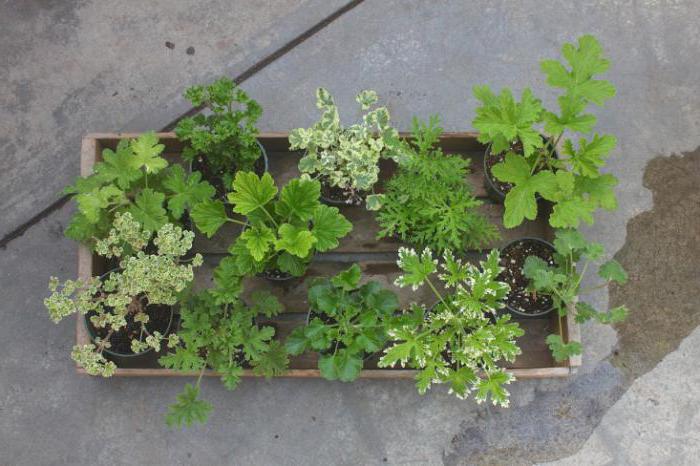

Description of ampelous pelargonium (with photo)
Let's start the description with the fact that as an ampelous plant, Pelargonium is allowed to grow a few species with long hanging stems. Shoots are most often long, can reach 70-100 cm. In many varieties, the stems have the ability to curl and climb over supports, so the plant is often used to decorate small vertical structures and walls in the room.
During the flowering period, pelargonium willingly forms umbrella inflorescences, which collect a variety of flowers. There are varieties with double, star, cactus, peony and simple buds. The diameter of the apical inflorescence often exceeds the mark of 8-10 cm. In one "umbrella" there can be up to 30-50 flowers on long peduncles. Pelargonium boasts a very wide variety of inflorescence shades. They can be purple, white, red, pink, lilac, white and other colors.
There are varieties with a color of two or three colors, most often it is a contrasting border of the corolla petals, as shown in the photo of ampelous pelargonium below:
Features of growing and care: temperature conditions, reproduction
In summer, geranium feels comfortable at a temperature of +20 ... +28 ° C, and +30 ° C is not critical for it. In winter, when the plant does not bloom, 11-15 ° C is enough for it, but it is undesirable to allow a decrease to 8 ° C or more.
Geranium is propagated by cuttings and seeds. An adult plant with a hardened trunk must be rejuvenated. The apical stalk with five leaves is cut just below the node at a slight angle. Having processed the dried cut with humate or charcoal, the shoot is placed in a container with soil (a mixture of equal parts of turf, sand and peat). The soil is regularly sprayed, in which cuttings take root after three weeks, which are then transplanted into pots. Young plants (regardless of the type of geranium), the care of which is correct, delight in seven months with the first flowers.
Seeds are planted in moist soil, preventing the earthen coma from drying out. The temperature is maintained at +22 ... +24 ° C. After 14 days, the first shoots appear. Seedling picking is recommended in pots up to 9 cm in diameter.
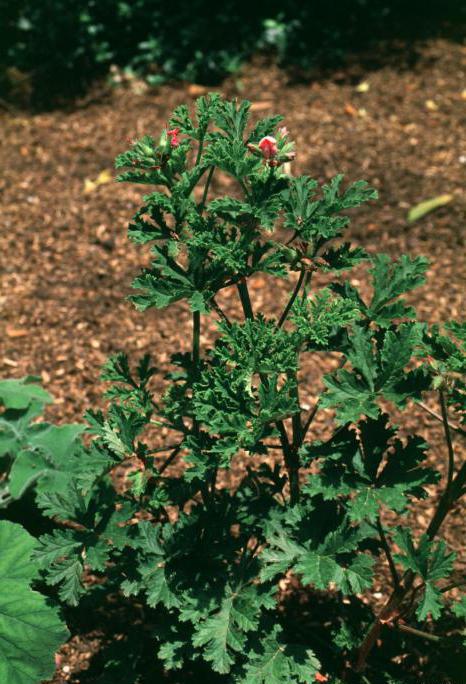

Reproduction of ampelous pelargonium
Pelargonium ampelous or geranium does not differ from other species in some complex ways of reproduction. Just like other varieties, new specimens can be obtained using seeds or by cuttings.
For large group plantings of flowers, it is best to use seed propagation. At the moment, there are many different hybrids and botanical varieties that differ in the length of the stems, purpose, color and shape of the buds.And also a mixture of planting materials that allow you to grow several plants with a variety of flowers, but similar in shape to the leaves.
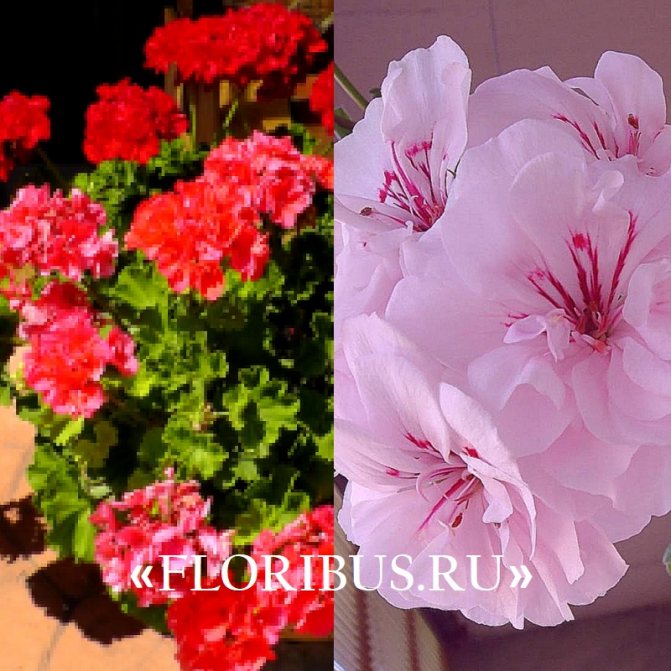

It is possible to sow planting material for the propagation of ampelous pelargonium from the middle of winter, if you can provide additional illumination with fluorescent lamps for the seedlings. Sowing dates can be extended until the end of April. If the plant is sown at this time, the perennial will begin to bloom in early summer. Use shallow bowls as a container. They need to be filled with a peat-based nutrient substrate. Before planting the seeds, the soil is moistened. Planting material is closed to a depth of 4-5 mm. After sowing, cover the seed container with a transparent plastic or glass cover.
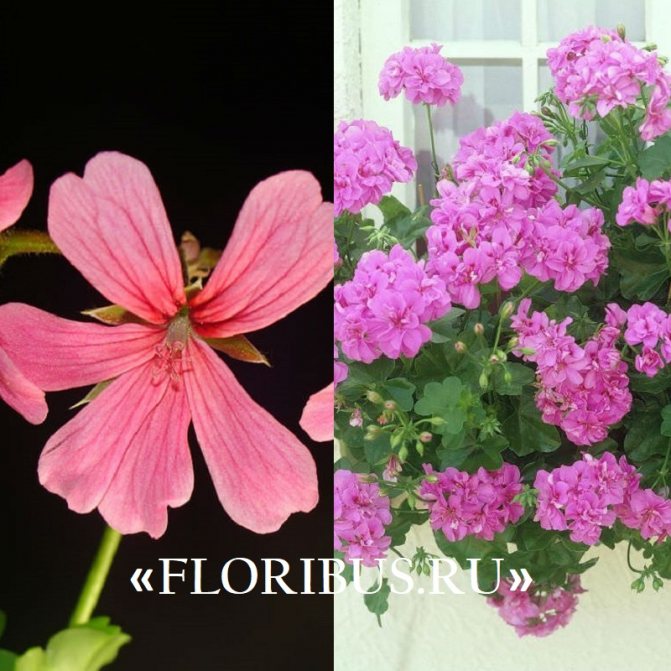

We care properly: watering, air humidity, feeding
Geranium prefers fresh air and moderate humidity. She is not afraid of either dry or humid air. The plant does not require spraying. In summer, abundant watering is necessary, but you should not overdo it on this issue, so it is better to drain the water from the sump. In winter, it is not worth pouring the flower, it is necessary to ensure that the earthen lump is not overdried, and excessive moisture will entail decay of the roots. It is recommended to use rain, melt or settled water for irrigation.


The plant needs a universal soil mixture (deciduous soil or humus, turf, river sand). For feeding, you should use fertilizers containing nitrogen, potassium, phosphorus (for violent flowering), with the addition of trace elements of iron, magnesium, boron, copper, manganese, calcium and zinc, which prevent root decay. In winter, green pets need to be fed once a month, and in the spring-summer period - after two weeks.
In autumn, the plant is annually pruned, removing yellowed leaves, leaving only a few nodes on the shoots. Sprinkle the slices with charcoal or activated charcoal.
Where and how to plant?
- For a flower, too fertile land is not necessary. Otherwise, the plant will produce many leaves and few flowers.
- The container intended for geraniums must have a sufficient number of holes so that air can circulate freely and there is an outflow of excess moisture.
- A drainage layer is laid at the bottom. It consists of expanded clay, pebbles and foam.
- Watering is carried out as the soil dries out. In winter, it is generally required only two times a month.
- The pot is installed on a lighted windowsill, otherwise the plant will quickly die from a lack of light or stretch out and take on an ugly shape. Therefore, usually the pot with the plant is placed on the south side. Only on very hot days may shading be necessary.
Lighting and location
If there is enough light, then the flowering of geraniums will be abundant. You need to choose the south side to install the pot. Only in this case will the plant bloom for a long time.
Soil requirements


As mentioned above, too fertile soil for a flower is not taken, since there will be a lot of foliage and few flowers.- Drainage is required before planting.
- Fertilizers are applied throughout the growing season. In particular, liquid feeding gives the desired result.
For feeding, you can use a solution with the addition of iodine. For this, a drop of iodine is dissolved in one liter of water. Then the plant should be watered. But at the same time it is necessary to ensure that the solution does not fall on the roots, therefore watering is carried out along the walls of the pot. Experienced gardeners say that after such feeding, the flower blooms well.
Important! Complex mineral fertilizers containing phosphorus will be useful. Organic fertilizers are not used for geraniums.
Pests
Like any plant, geranium has pests that can affect the external state of the flower. Among them is the whitefly, which settles on the back of the leaves, where it multiplies rapidly, feeding on the sap of the plant. Small moths drain the plant.If uninvited guests are found, spraying the flower crown with insecticides is required. On the leaves of geraniums, small greenish-grayish insects also settle on the underside. It is an aphid that feeds on the sap of the plant, which leads to the appearance of small spots and wilting of the flower. To get rid of such a parasite is the same as from the whitefly. With proper care, the flower will bring joy to its owners for many years.
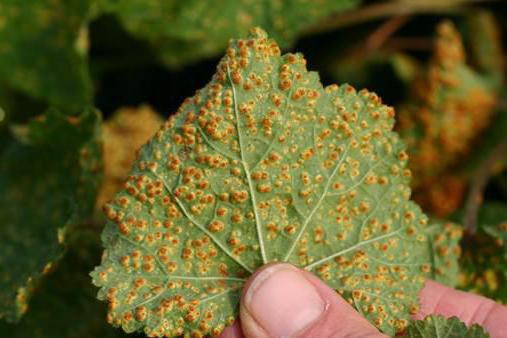

So, let's summarize. We discussed what species geranium has. The photos, the beauty in which is presented in all its diversity, testify that she is worthy to decorate any room: a house, apartment, office, childcare, cafe terrace or summer cottage. Pick up a couple of species, you will see - you will not regret it!
How to provide proper care?
When caring for room geraniums, you need to adhere to the following rules:
- You can not pour geranium, as the plant tolerates excess moisture much worse than drought. Indoor geranium is not sprayed with water. Drops of moisture, falling on the leaves, get stuck between their villi, and a favorable environment for the growth of bacteria is created.
- There is no need to worry about the flower in the hot season, the plant can easily endure high temperatures.
- If there is not enough lighting, then artificial daytime lamps should be used, so the buds will form more actively.
- The dried soil is regularly loosened to ensure the flow of moisture and oxygen to the root system. You can use an old fork or wooden stick.
Pelargoniums "Angels" - Angel pelargoniums
Many growers believe that "Angels" belong to the variety series of royal pelargoniums. But this is not the case. The first true "Angels" were obtained by the English florist Langley Smith by crossing royal and curly pelargoniums. It happened in the 1930s. Later, new varieties of Pelargonium "Angels" were bred in the process of hybridization within the group itself.


Pelargonium "Angel" - grade Eskay Saar
The "Angels" differ from the royal pelargoniums by the smaller size of leaves and flowers (diameter 1-2 cm). The type of growth of the "queens" is vertical, while the "angels" form ampelous bushes.
"Angels" are more persistent and unpretentious than varieties of royal geraniums. They grow fast, need a lot of light and tolerate dry conditions well.
Flower use


Geranium is used for landscaping an apartment. But in the spring, when the threat of return frosts has passed, it is better to plant it in a flower bed. All summer she will delight with lush flowering.
Read also: Peony evasive (Maryin root): botanical description and medical applications
Geranium leaves are used in salads or for baking. Used as a condiment. This largely depends on the geranium variety and the personal preference of the owner. Geranium leaves are used to flavor clothes in wardrobes.
Application in landscape design
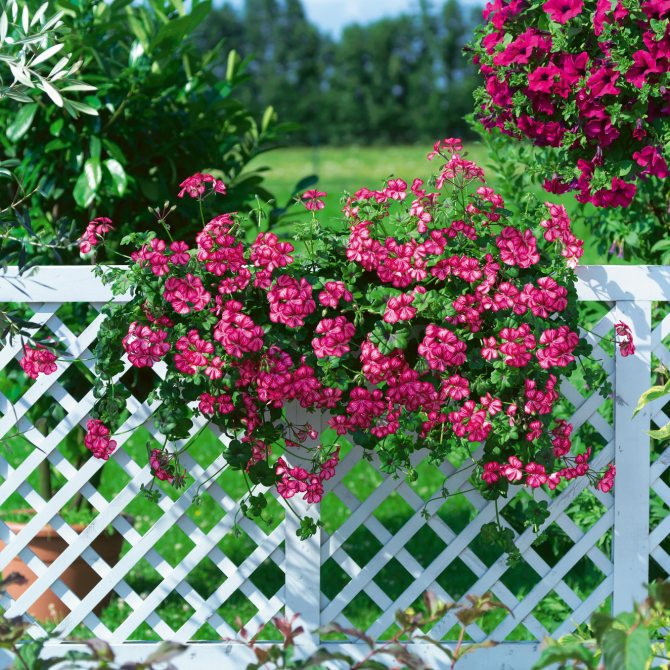

Pelargonium ivy deserves a special place in the landscaping of the garden and premises. Its hardiness, ease of watering and its ability to withstand direct sunlight makes it an ideal plant for vertical landscaping in containers and flowerpots. Strong shoots will not be broken by the wind in balcony compositions, and the ability to drag along the support will allow them to be used for small trellises. Indoors, it looks great all year round and retains a green mass of leaves in winter.
Fight against diseases and pests of ampel geranium
It is dangerous to flood the plant. If the earth does not dry out, it can rot. When root rot appears, you can treat the plant with "Fundazim" or "Fundazol".
Other diseases that threaten room pelargonium:
- rust;
- gray rot;
- a bacterial infection that causes leaf wilting.
Of the pests on geraniums, the mealbug, spider mite and whitefly are most often found. In order not to spray a large bush on the leaves, systemic insecticides are used (from the acaricide mite).The plant is watered with a preparation diluted in water, under the root.
Pelargoniums "Unique" - Unique pelargoniums
"Unicums" are an old group of pelargoniums cultivated since the 60s of the 18th century. It was obtained by crossing the royal and brilliant (P. fulgidum) pelargonium. The first variety was named Old Unique. Subsequently, all representatives of the group were united under the common name Unique pelargoniums.
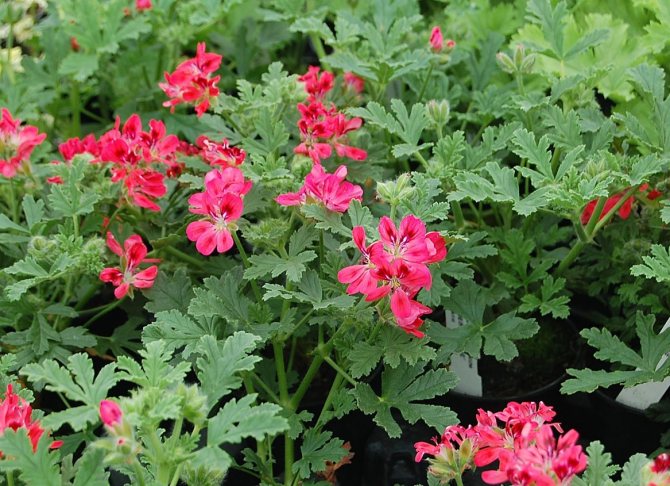

Pelargonium "Unique" - Robin's Unique
Flowers "Unicums" are similar to the flowers of royal pelargonium, but smaller in size. Leaves are dissected, sometimes with a fragrant smell. For example, the leaves of Paton's Unique have a sweet, peachy aroma.
During the Victorian era, Unicums were very popular as garden plants. Plants are rather large and tall. To bloom, their growth should be 40-50 cm. They bush poorly on their own, pinching or pruning is required.
Photo
Below you can see a photo of ampelous pelargonium flowers.
Growing conditions
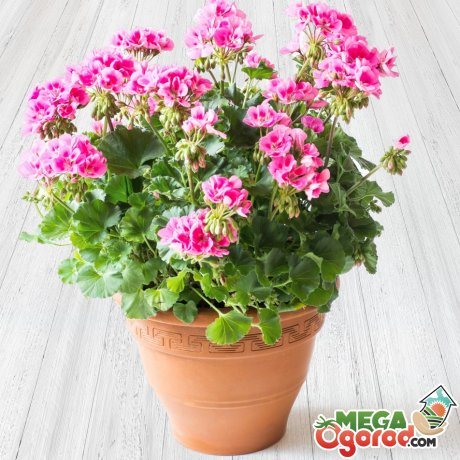

Geranium is an unpretentious plant. But often she dies due to mistakes in care. Usually this:
- The temperature is too low. Optimal from 15 to 20 degrees. If it is below 10 ° C, the plant disappears.
- Excessive moisture and poor drainage in the pot. This is manifested by yellowing and wilting of the leaves. The root system rots and the plant dies.
- The lack of moisture is manifested by the fact that the leaves turn yellow and dry out at the edges.
- With insufficient light, the leaves grow small, with long petioles, some of them fall off. The plant stretches upward, has a pale appearance. It is better to install the flower on the southern windows. Cover from the sun only on particularly hot days.
- Geranium needs constant bush formation. In order for it to be branched, the shoots are pinched. If you do not plan to collect geranium seeds, the brushes are removed after flowering. This will improve the appearance of the plant and allow other buds to develop faster.
- The size of the pot matters. If the dishes are too wide, the plant will not bloom well.
- Geranium is transplanted when the roots of the plant begin to break through from the drainage holes. If not transplanted on time, the leaves will begin to turn yellow and fall off.
Plant care
The flower does not require special conditions for growing, but you need to pay attention to such points: regular watering, good lighting and air temperature.
I live in a private house and in winter I keep pots of flowers in the house. In the spring, I plant young plants in flower beds, in the front garden, and "potted" plants intended for sale, I take them out into the street. When there is a danger of frost, I cover the plants with foil at night.
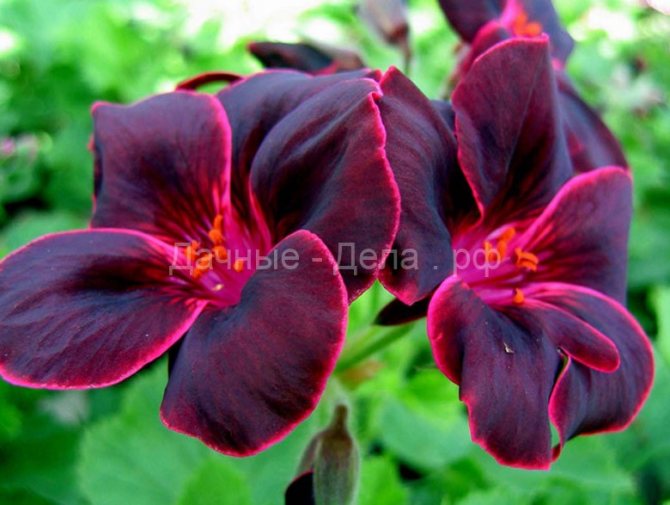

Possible diseases
Common problems that can affect a potted flower:
- fungal disease, manifested by spotting on the leaves;
- root rot, which is the result of an excess of moisture;
- a bacterial disease provokes the wilting of the plant;
- rust on the leaves, usually characterized by a yellow spot.
To prevent the further development of this or that disease, it is necessary to normalize the care, in some cases it will be necessary to resort to the treatment of pelargonium with special means.
Ampel ivy-leaved pelargonium can become a real decoration of your home, balcony, garden plot, if you follow the simple rules of care.


Soil preparation
As mentioned above, in order for the flowers to successfully root, it is enough to buy a universal primer in the store... But you can prepare it yourself.
Ingredients you will need for self-cooking the soil:
- sod land;
- leafy land;
- humus;
- peat;
- sand.
The proportions of the components must be equal. Small planters can be used as a pot.
Royal


Due to its amazing decorative qualities and a rich palette of shades of buds, royal pelargonium (Pink Mikado, Aristo Schoko, Imperial, Black Prince, etc.) is very popular among gardeners.
According to the description, the height of an adult bush can reach 50 cm, while the average bud diameter is 15 cm. With proper care and a favorable microclimate, royal pelargonium blooms for 4 months.
A distinctive feature of this subspecies is the presence of a dark shade of stripes or spots on the petals, characterized by a double, wavy or corrugated shape.
Is it possible to grow not only at home, but also outdoors?
Separately, it should be said about the cultivation of geraniums on the street. In order for the plant to grow not at home, but in outdoor conditions, it must be prepared. To do this, in the spring, containers with flowers begin to gradually expose to the street for a while, while avoiding freezing temperatures. After freezing, geraniums can be exposed outside for the summer.
Closer to autumn, when the temperature starts to drop below 10 ° C, it is recommended to take geraniums indoors. At the same time, special conditions are created for them - a bright and cool place, the temperature of the content is 7-10 ° C, as well as a reduction in watering. During the off-season, the plant can winter on window sills..
Ampel geranium is an incredibly beautiful plant that, with proper care, can become a real addition to the interior and delight with cascades of curly flowers not only during flowering, but also in winter. It does not require special care and is easy enough to maintain, which is why it is in demand among gardeners in many countries.
If you find an error, please select a piece of text and press Ctrl + Enter.
Meadow
Garden geranium meadow is a low bush. The disadvantage is its instability, it can fall apart. The peak of flowering of the plant falls in the middle of June. The flowers are lilac - cornflower blue. Inflorescence petals are rounded at the ends. The grains ripen at the end of summer. They mainly reproduce using seeds.
Forest pelargonium prefers to grow under trees or bushes. The color of the flowers fascinates with a gentle pink-lilac color. You can meet her along the road, in the forest, in the park, in the meadow.
Roseanne geranium is quite an impressive bush, up to 50 centimeters high, up to 60 centimeters wide. This type of garden pelargonium will bloom from mid-May to the first frost in November. The flowers are blue and yellow, which are collected in an inflorescence. Each bud consists of five petals, about 5 centimeters in diameter. Mainly used for mass planting and color enhancement.
